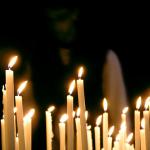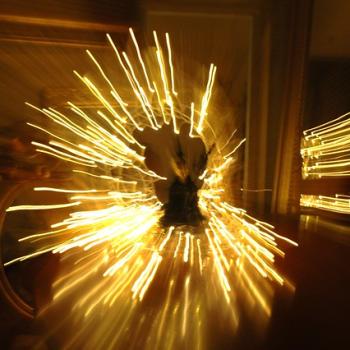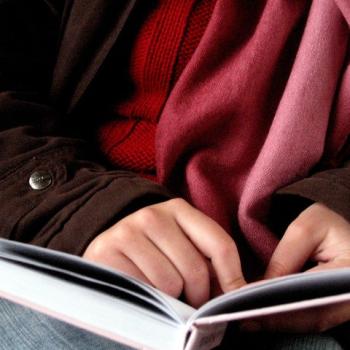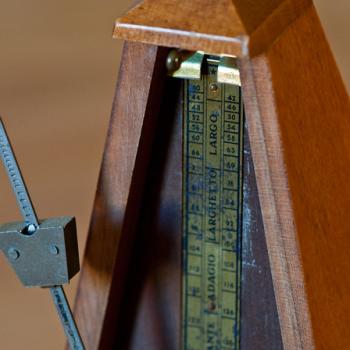
Refugees From Spiritual Drought
Next week I will be on a trip to find refuge from spiritual drought. I plan to drive north through the dry and thirsty state of California to New Camaldoli Hermitage near Big Sur.
The person in this photo came to the area where I will be driving as a drought refugee 86 years ago. People from parts of the country where dry and windy weather removed the topsoil came to California seeking refuge. They wanted lives with more opportunity and more security.
My trip up to Big Sur will, I hope, be easier than their trips to California. I will follow freeways in a car with air conditioning. I can stop, if I need, to purchase fuel or fast food.
They were trying to find an oasis from dust storms and financial hardships. My goal is to spend some time recovering from spiritual drought.
I plan to drive up the coast each summer to spend time on retreat at New Camaldoli. One summer I was not able to go because a winter storm had washed out the highway both north and south of the hermitage. Another summer I was not able to go because the monastery was surrounded by fire. Most of the monks were evacuated and it became a staging area for firefighters.
Some of us have our own theories about what causes the spiritual drought we experience. We may believe in a spiritual equivalent of climate change, pushing us into spiritual drought. Others of us see a prolonged period of pandemic, war, famine, and death as the cause of our drought. Our struggling has exhausted us.
The places where we are accustomed to going to find a refreshing drink are shrinking.
Where can we go to save ourselves and satisfy our thirst?
The Roots of Our Spiritual Drought
What brings on our spiritual drought? Are there causes we can recognize and understand?
Some people blame the Internet or cellphones or social media. They are convinced we are losing our ability to be open to spiritual life because our electronic devises distract us. We can no longer listen to the sacred stillness we need to resolve our spiritual drought.
I believe stillness was a challenge for us even before we had access to the Internet and electronic devices. There were people who felt television was a distraction before the Internet, and radio before television.
For me, the roots of spiritual drought are within us, not in anything electronic.
My experience tells me our minds do not perceive stillness as helpful. We see the world as filled with potentially dangerous threats and our minds need to be vigilant to keep us safe.
Listening to sacred stillness could mean we miss some potentially devastating threat to us.
Our minds are focused on solving problems, and threats are particularly challenging problems. When we try to practice contemplation and reflection, our minds experience it as a lack of problems. Our brains try to solve the problem of not focusing on problems by generating problems to solve.
Some people have particular difficulty beginning contemplative practices. Their minds might be particuarly adept at solving problems and reluctant to take any time away from problem solving.
They may not perceive a spiritual drought as a problem which needs our focused attention.
The first step in addressing spiritual drought is training our minds to recognize its importance.
Our society’s overall spiritual drought is rooted in our own personal droughts. Each of us can take steps which will help relieve our society’s drought.
How can we begin to address our spiritual drought and find the relief we need?
Spiritual Drought Relief
One of the most effective ways to relieve our spiritual drought is to start a practice of listening to sacred stillness. We can each set aside a specific period of time each day to spend in stillness.
Some of us are comfortable sitting still and listening to the stillness within us. Other people may prefer to take a walk or listen to stillness in a particular place.
One of the challenges we face is people are so thirsty in our society our stillness makes them curious. When we listen to stillness in a public place other people tend to want to interrupt us and ask questions.
If you are comfortable with people’s questions, places like parks or gardens can be great places to practice stillness.
I know people who seek out quiet places to practice stillness. They find empty places of worship during the week in their neighborhoods and slip in to spend time listening.
I am going up to Big Sur next week to spend some time listening, to relieve spiritual drought.
We each play our own part in spiritual drought relief in our own ways.
Healing the Wounds of Spiritual Drought
We may find, as we develop a contemplative practice, the benefits go beyond restoring our supply of stillness.
Our spiritual drought drains our ability to listen and pay attention. When we do not spend enough time in stillness and contemplation we begin to see every situation as urgent. Our minds pull us into emergency and stress which drains us further.
Ironically, our focus on solving problems keeps us from seeing our deeper challenges.
A drought turns our lives into dust and ashes. Our days are arid and filled with dry winds and brush fires. Our nights do not bring relief.
We try to entertain and distract ourselves, but cannot find the cleansing nourishment for which we thirst.
Next week, I will follow the paths other drought refugees have followed and seek relief. Please pray we will learn the lessons this drought has to teach us, and for spiritual life in a dry and challenging time.
Closing our eyes, we tilt our heads to the sky waiting for the first drops of water.
Where are we experiencing spiritual drought today?
How will we help relieve our spiritual drought this week?
[Image by exit78 & Dorothea Lange]
Greg Richardson is a spiritual director in Southern California. He is a recovering assistant district attorney and associate university professor, and is a lay Oblate with New Camaldoli Hermitage near Big Sur, California. Greg’s website is StrategicMonk.com and his email address is [email protected].












